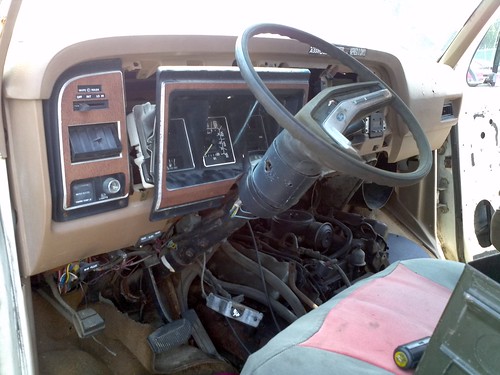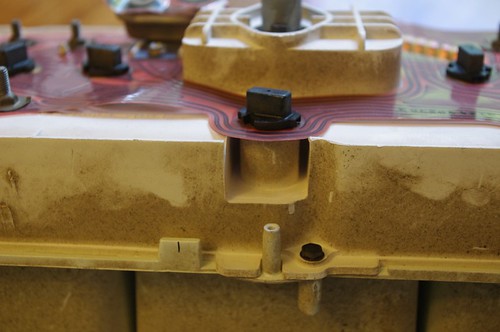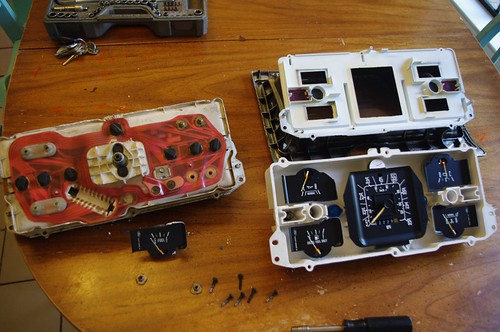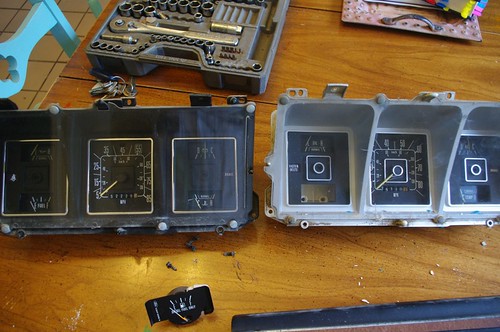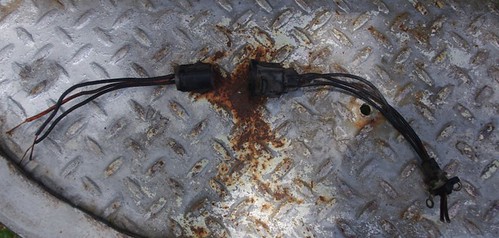So with my friend Andrew in town, I wanted to tackle the headliner. Mine was completely missing (including trim) and just the insulation was showing. In a previous post,
Phase 1, I described the headliner that I found. Long story short, it was not suitable to install, but I thought I could use it as a pattern.
I had seen a few examples of people doing it this way.
This example uses fiberboard. I liked that direction, but I had my doubts that it would be flexible enough. People use steam to make it conform to the contour of the roof. I wasn't interested in striping the interior and pumping steam into the cab, so I looked for another material. I thought something plastic would be a good combination of flexibility and durability. Andrew went to Lowe's with us and we settled on this stuff:
 |
| Headliner material |
It is vinyl wallboard .060 inches thick. It is meant for wall covering in showers and such. They had some similar stuff that was a good bit thicker. The thicker material probably would have worked better, but it was $34 versus $19. The whole point of this project was to save money, so we went with the cheaper one.
It was easy to cut with a utility knife. We traced the old headliner and cut it about three-quarters of an inch bigger all the way around. The original piece had cutouts for the screws. The screws don't actually hold the headliner up. Instead, the trim clamps it to the roof. We did not make the cutouts and screwed through the trim and vinyl. The only exception was on the rear of the headliner, but in hindsight, I would have left those out too. The vinyl is not as rigid as the original material and it needs more support.
It was good that we cut it big because we only needed to trim in a couple of places. It went in easy enough. The only difficult part was finding the hole for the center screw. There was no way to see it, so we just had to feel for it with a pin.
Here is the finished product. It sags slightly, but it isn't really noticeable. I am pleased with the result.









